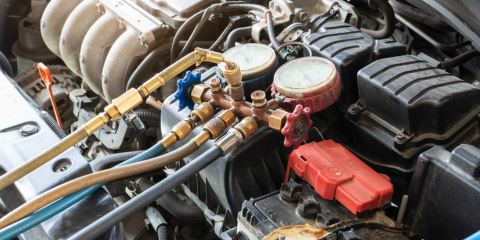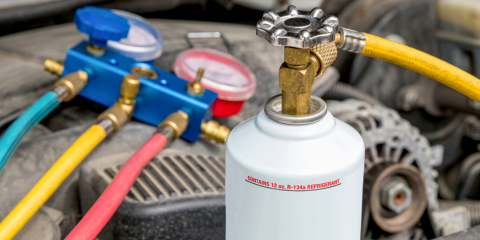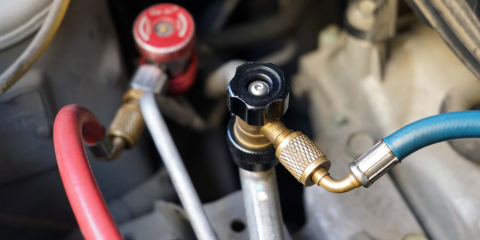Content provided by AAA’s Discounts & Rewards partner: NAPA Auto Parts
After a long and winter, the sun is finally shining once again. It’s the time of year when we like to hop into our cars, crank some tunes and blast down the highway, with the A/C going full-tilt because after all, we like the weather outside to be warm, not our cars. Only this time, your A/C switch does nothing. No cool breeze, not even a whiff, just a steady stream of hell-fire coming from the vents. You could have avoided all of that had you simply followed a few guidelines and performed a little air conditioning maintenance on your vehicle.
There are several reasons for your A/C to go down, and each one is preventable. The A/C system works by compressing a refrigerant gas, and through controlled release of the pressure, generates frost on the coils inside the airbox under the dash. This is a similar process as using an aerosol can, the quick release of pressure cause the can to get cold. In the A/C system, the released gas is inside a sealed system, so that the process is continuous. The main components are the gas, the compression system (compressor), and the seals. There are other components, such as hard lines, flex lines and valves, but managing the three main components will take care of the others in most cases.

Compressor

Refrigerant
Over time, the cooling gas can seep through the seals and hoses, especially newer cars with R134A gas. The molecules in R134A are smaller than the older R12 gas, which is why an R134A conversion requires changing out the hoses to R134A-compliant pieces. Adding gas to an A/C system is easy with a do-it-yourself kit from NAPA. Just make sure you buy a kit with a gauge that shows low pressure (yellow), good pressure (green), and high pressure (red). You can even buy a kit that comes with the correct PAG oil for the compressor.

Seals and Hoses
The seals are internal, but you need oil and conditioner in the gas to ensure the seals stay together. Over time, especially long periods of non-use, such as winter months or long-term storage, the seals can dry up, letting the gas leak out. The hoses crack and split with age as well, so an annual inspection is important. It is better to find out early in the year that you need to replace a hose than on a long July road trip in triple digit weather. That kind of repair can ruin your vacation and suck your wallet dry.
The seals are internal, but you need oil and conditioner in the gas to ensure the seals stay together. Over time, especially long periods of non-use, such as winter months or long-term storage, the seals can dry up, letting the gas leak out. The hoses crack and split with age as well, so an annual inspection is important. It is better to find out early in the year that you need to replace a hose than on a long July road trip in triple digit weather. That kind of repair can ruin your vacation and suck your wallet dry.
Beyond just the annual service, you can do a few things at home to make sure your system stays in tip-top shape. Every month, regardless of the temperature, run the A/C to 10-15 minutes. This will keep the oils circulating through the system, maintaining those seals and the interior of the hoses. Check the cabin air filter (usually located on the passenger side under dash area, consult your owner’s manual), and replace when necessary. This helps filter out microbes, allergens and smells from the outside air, but over time it clogs up with water and dirt, which eventually turns into mildew and that gym-sock smell. While you are there, fire up the A/C and spray some A/C deodorizer into the intake of the system. This will kill any bacteria growing your airbox and vents, eliminating the hazard and smell.
An annual service for your A/C system costs vary by the shop, but it is money well spent, as any A/C system repair will cost you far more.


